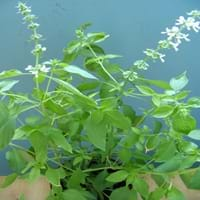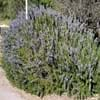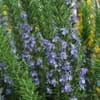Life Span
Perennial
Perennial
Habitat
-
Scrubs, tussock grasslands, Upland savannas
USDA Hardiness Zone
9-11
10-11
Sunset Zone
A1, A2, A3, H1, H2, 1a, 1b, 2a, 2b, 3a, 3b, 4, 5, 6, 7, 8, 9, 10, 11, 12, 13, 14, 15, 16, 17, 18, 19, 20, 21, 22, 23, 24
8, 9, 12, 13, 14, 15, 16, 17, 18, 19, 20, 21, 22, 23, 24
Habit
Clump-Forming
Upright/Erect
Flower Color
White
Lemon yellow
Flower Color Modifier
Bicolor
Bicolor
Fruit Color
Tan
Gray Green
Leaf Color in Spring
Green, Gray Green
Blue Green
Leaf Color in Summer
Green, Gray Green
Blue Green
Leaf Color in Fall
Green, Gray Green
Blue Green
Leaf Color in Winter
Light Green
Blue Green
Leaf Shape
Oval
Long Narrow
Plant Season
Spring, Summer, Fall, Winter
Spring
Sunlight
Full Sun, Partial Sun
Full Sun
Type of Soil
Loam, Sand
Loam, Sand
The pH of Soil
Neutral
Acidic, Neutral, Alkaline
Soil Drainage
Well drained
Well drained
Bloom Time
Indeterminate
Spring, Late Winter
Tolerances
Drought
Drought
Where to Plant?
Container, Ground, Pot
Ground
How to Plant?
Cuttings, Seedlings
Seedlings
Plant Maintenance
Medium
Medium
Watering Requirements
Allow soil to be completely dry in between waterings, Do Not over Water, Requires regular watering
Do not water excessively
In Summer
Lots of watering
Lots of watering
In Spring
Moderate
Moderate
In Winter
Average Water
Average Water
Soil pH
Neutral
Acidic, Neutral, Alkaline
Soil Type
Loam, Sand
Loam, Sand
Soil Drainage Capacity
Well drained
Well drained
Sun Exposure
Full Sun, Partial Sun
Full Sun
Pruning
Remove damaged leaves, Remove dead branches, Remove dead leaves
Remove dead or diseased plant parts, Requires little pruning
Fertilizers
All-Purpose Liquid Fertilizer
All-Purpose Liquid Fertilizer, No fertilizers needed
Pests and Diseases
Downy mildew, Dry root rot, Fusarium wilt, Gray mold, Japanese Beetles
Insects, Root rot
Plant Tolerance
Drought
Drought
Flower Petal Number
Single
Single
Fragrant Bark/Stem
Yes
No
Foliage Texture
Medium
Fine
Foliage Sheen
Matte
Matte
Attracts
Aphids, Beetles, Leaf Hoppers, Nematodes
Butterflies
Allergy
Hives, Itchiness, Rash, Swelling
Asthma, Eye irritation, Headache, Nose Irritation, Throat itching, Vomiting
Aesthetic Uses
Borders, Used for decorating walls, fences, gates, hedges, etc.
Showy Purposes
Environmental Uses
Air purification
Air purification, soil stabilisation
Medicinal Uses
Low calories, Manganese, Potassium, ß-carotene, Vitamin A, Vitamin K
-
Part of Plant Used
Leaf Stalks, Leaves
Flowers, Sap, Seeds
Other Uses
Added to salads, Powdered and mixed with tea, Used in tea, wine and sweet dishes, Used to flavour soups
Used as a dye, Wood is used fore making tools
Used As Indoor Plant
Yes
No
Used As Outdoor Plant
Yes
Yes
Garden Design
Container, Edible, Herb / Vegetable, Mixed Border
Shade Trees, Street Trees
Botanical Name
OCIMUM x citriodorum
ACACIA aneura
Common Name
Lemon Basil
Mulga, True Mulga
In Hindi
नींबू तुलसी
Mulga
In German
Limonenbasilikum
Mulga
In French
citron basilic
Mulga
In Spanish
Ocimum × citriodorum
Mulga
In Greek
λεμόνι βασιλικός
mulga
In Portuguese
manjericão limão
Mulga
In Polish
Bazylia cytrynowa
Mulga
In Latin
lemon Basilius
Mulga
Phylum
Tracheophyta
Magnoliophyta
Class
Magnoliopsida
Magnoliopsida
Family
Lamiaceae
Fabaceae
Clade
Asterids
Angiosperms, Eudicots, Rosids
Importance of Lemon Basil and Mulga Tree
Want to have the most appropriate plant for your garden? You might want to know the importance of Lemon Basil and Mulga Tree. Basically, these two plants vary in many aspects. Compare Lemon Basil and Mulga Tree as they differ in many characteristics such as their life, care, benefits, facts, etc. Every gardener must at least have the slightest clue about the plants he wants to plant in his garden. Compare their benefits, which differ in many ways like facts and uses. The medicinal use of Lemon Basil is Low calories, Manganese, Potassium, ß-carotene, Vitamin A and Vitamin K whereas of Mulga Tree is . Lemon Basil has beauty benefits as follows: while Mulga Tree has beauty benefits as follows: .
Compare Facts of Lemon Basil vs Mulga Tree
How to choose the best garden plant for your garden depending upon its facts? Here garden plant comparison will help you to solve this query. Compare the facts of Lemon Basil vs Mulga Tree and know which one to choose. As garden plants have benefits and other uses, allergy is also a major drawback of plants for some people. Allergic reactions of Lemon Basil are Hives, Itchiness, Rash and Swelling whereas of Mulga Tree have Asthma, Eye irritation, Headache, Nose Irritation, Throat itching and Vomiting respectively. Having a fruit bearing plant in your garden can be a plus point of your garden. Lemon Basil has no showy fruits and Mulga Tree has no showy fruits. Also Lemon Basil is not flowering and Mulga Tree is not flowering . You can compare Lemon Basil and Mulga Tree facts and facts of other plants too.





